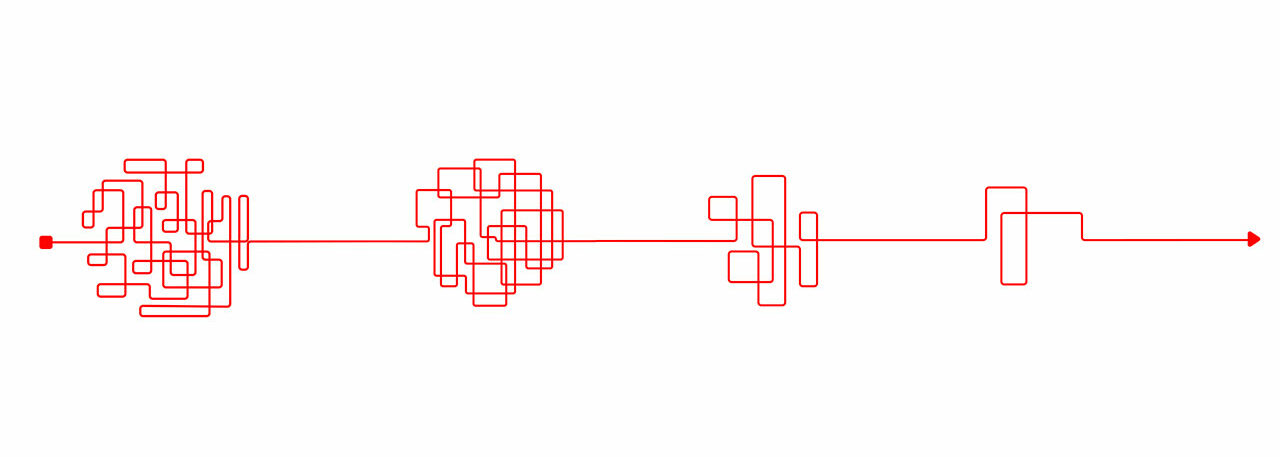Many organisations, whether they are implementing a new business system such as an ERP solution, or assessing their entire application landscape, struggle with the conflict between delivering simplification and standardisation. They also have trouble ensuring that the distinct needs of the industry and organisation they are required for are delivered.
In recent years, one of the most substantial attempts to address this challenge of complexity in the realm of back-office systems such as ERP and HCM, has been the adoption of industry-specific strategies. These assess business processes (and the underlying technology) from the perspective of identifying core capabilities, common to all businesses or enterprises, and then focussing on functionality and processes that are specific or unique to a given industry.
The goal has been to create a ‘best of both worlds’ scenario that enables a business to retain its unique footprint and competitive edge, whilst reducing complexity that can frustrate growth and time to market.
The impact of ‘industry-specific’
The drive towards industry-specific software has led to a flurry of acquisitions and organisational changes at almost every major software vendor. These purchases have sought to acquire the capabilities, functionality and innovation that was created by industry-focussed vendors. Infor acquiring GT Nexus in the logistics and shipping space, Oracle buying Cerner for healthcare, and SAP taking on
Concur for expense management are all examples of this. The goal is to deliver solutions with end-to-end business processes for a given industry ‘right out of the box’.
System integrators enter this equation and add value to customers by knowing how to navigate the platforms that are developed following these acquisitions. They also help interpret the demands and needs of a customer, turning the promise of software into solutions that deliver. The question therefore becomes how to define the right roadmap for you to gain from all the standard capability you can, whilst delivering to industry and your own unique needs. In our experience there are three broad layers.
The foundational layer begins with a recognition of what is common to all industries. These can be understood as achieving the best practices in the business functions common to enterprises, as well as similar processes, or indeed the backdrop of regulation. This layer should ideally be covered by the core functionality of enterprise software, such as Oracle Cloud ERP.
The second layer focusses on the consideration of what is specific to a given industry. For example the control of subcontractors in construction, management of grants in higher education and so on. This layer typically requires a blend of both industry software from the vendor and ‘accelerators’ from an industry expert system integrator – pre-defined templates, solutions and extensions that address industry-specific processes, analytics and outcomes.
The last layer is what differentiates an individual company – the ‘secret sauce’ which makes that company unique. It is important to recognise that this is not just their proprietary or patented products. The edge that a company is often defined with is in terms of back-office capabilities. Examples could include better utilisation of specialised resources, or the integration of processes to enable better planning across the enterprise – and if you have adopted leading capability and industry specific processes, this enables your organisation to focus on this area.
In practice, these layers are not of an even ‘thickness’. Our experience has been that when assessing successful technology investment and use, approximately 80 percent is covered by standard software plus configuration, 15 percent by industry accelerators, with the remaining five percent unique to a given company.
However, throughout all these three layers, it is vital to manage complexity by focussing on outcomes and doing business the right way. Companies should always prioritise the highest ROI and low hanging fruit to create momentum around these programmes.
The limits of industry-specific
Many vendors now claim they have best practice, standardised processes out of the box, as well as industry-specific accelerators borne of deep domain expertise. And at the same time, customer businesses will inevitably focus on what they perceive to be unique to them. When looking to address complexity, these two conditions combine in the question of what cannot be standardised.
This is the realm of specific IP in a business, and identifying it is no small undertaking. It may include material such as ‘project bibles’ in construction, different analytics for reporting, or even just the processes within a given company that are known to be different/better than the competition.
By working with your system integrator, you can both identify these areas early and develop your roadmap to deliver standardisation and simplification in common areas. It can also ensure that the right time and investment is dedicated to the things that truly differentiate you. This can cause conflict between operational and technology leadership, so change management is a critical element of any attempt to evolve towards less complexity. The good news is that even if a process remains unique, the investment made by some vendors in their platform means that they can be delivered and supported in a standard way.
The search for standardisation is a calming influence against ‘burn bright and die quickly’ projects.
As an example of this blended approach, at Inoapps we have a customer that designs, builds and installs 5G towers across the globe. They have used Oracle ERP to standardise purchasing and HR, but still maintain the unique aspects of their speed of response in creating new, customer-defined projects by utilising the low-code development capability of Oracle APEX. The client uses process standardisation to accelerate the innovation demanded by customers and to do so at speed.
Handling complexity will always involve a sophisticated compromise. The demands of the industry and the evolving business world are always changing, but for a lot of businesses, the situation must be weighed up against how one has always done things. Consequently, managing complexity is perhaps more accurately described as handling the challenge of innovation better. Again, this must be driven by a relentless focus on the best outcome or achieving the best process.
Technology and complexity
Businesses rightly prioritise incremental gains in the first instances of new technology investment, on a path of continual improvement, and optimisation, and most software platforms and vendors support this approach. But equally, businesses now realise that they need to make provision for genuinely new opportunities: the rise of the subscription economy, the opportunities of expansion and commercially exploiting new data are all examples of this.
Amidst this tension, IT is often a guardrail that prevents further complexity. The search for standardisation and assessing what can be achieved with existing technology investment from trusted partners is a calming influence against the threat of hundreds of isolated, ‘burn bright and die quickly’ projects. Indeed, the main threat of complexity is now often business departments that crave something new rather than just IT wanting to play with shiny new toys.
This is because IT has itself had to wrestle with years of complexity and the impact of new products and innovative technologies, changing the face of a market. The lesson learnt has been that to tame complexity, you must first embrace a level of standardisation and recognise that as a company, or indeed an industry, you may not be as unique as you thought. But once these layers of commonality have been stripped away, a business is left with what it does better than anyone else, and it can focus on those strengths to separate itself from the competition.
Andy Bird is CEO of Inoapps




